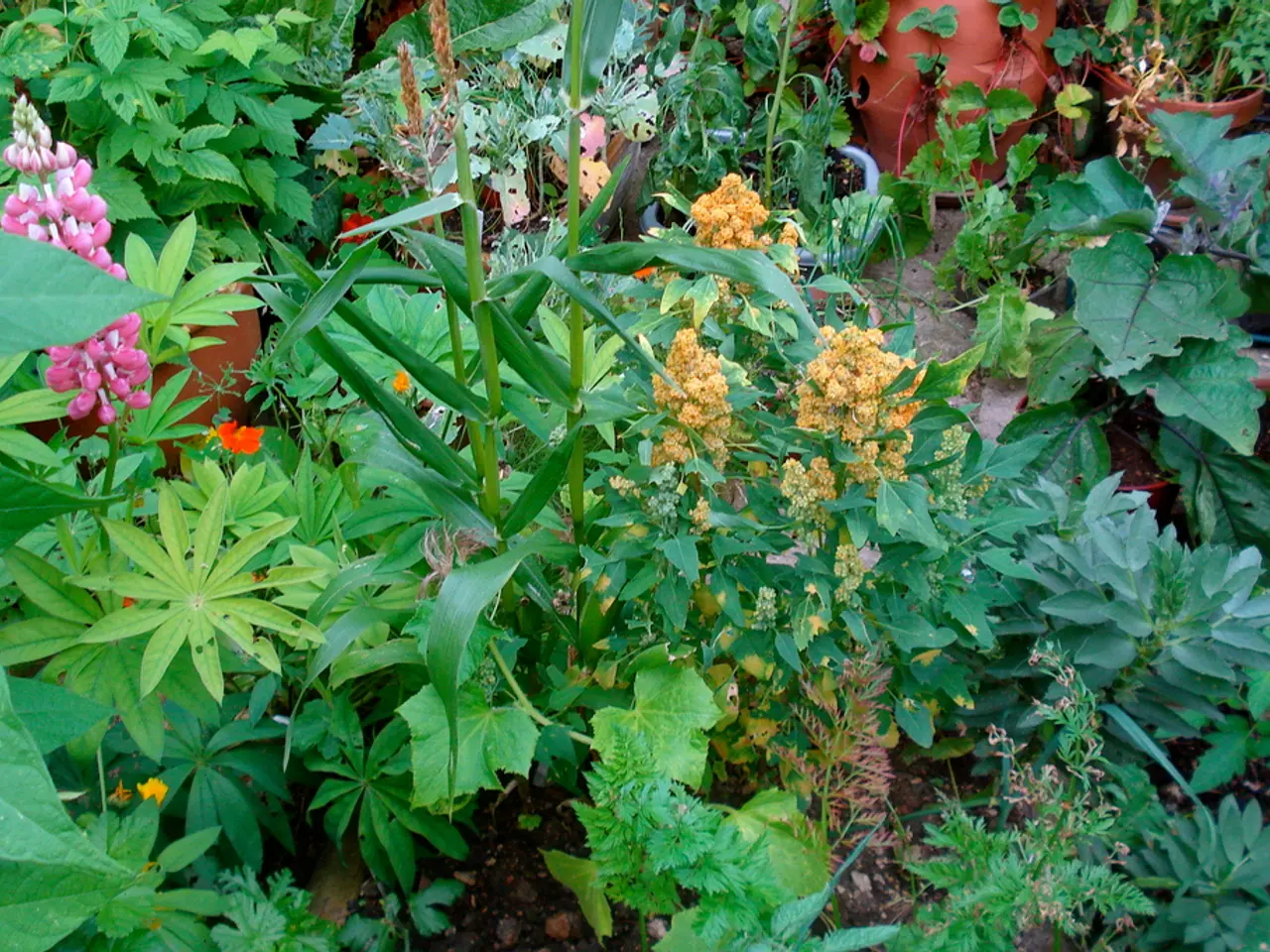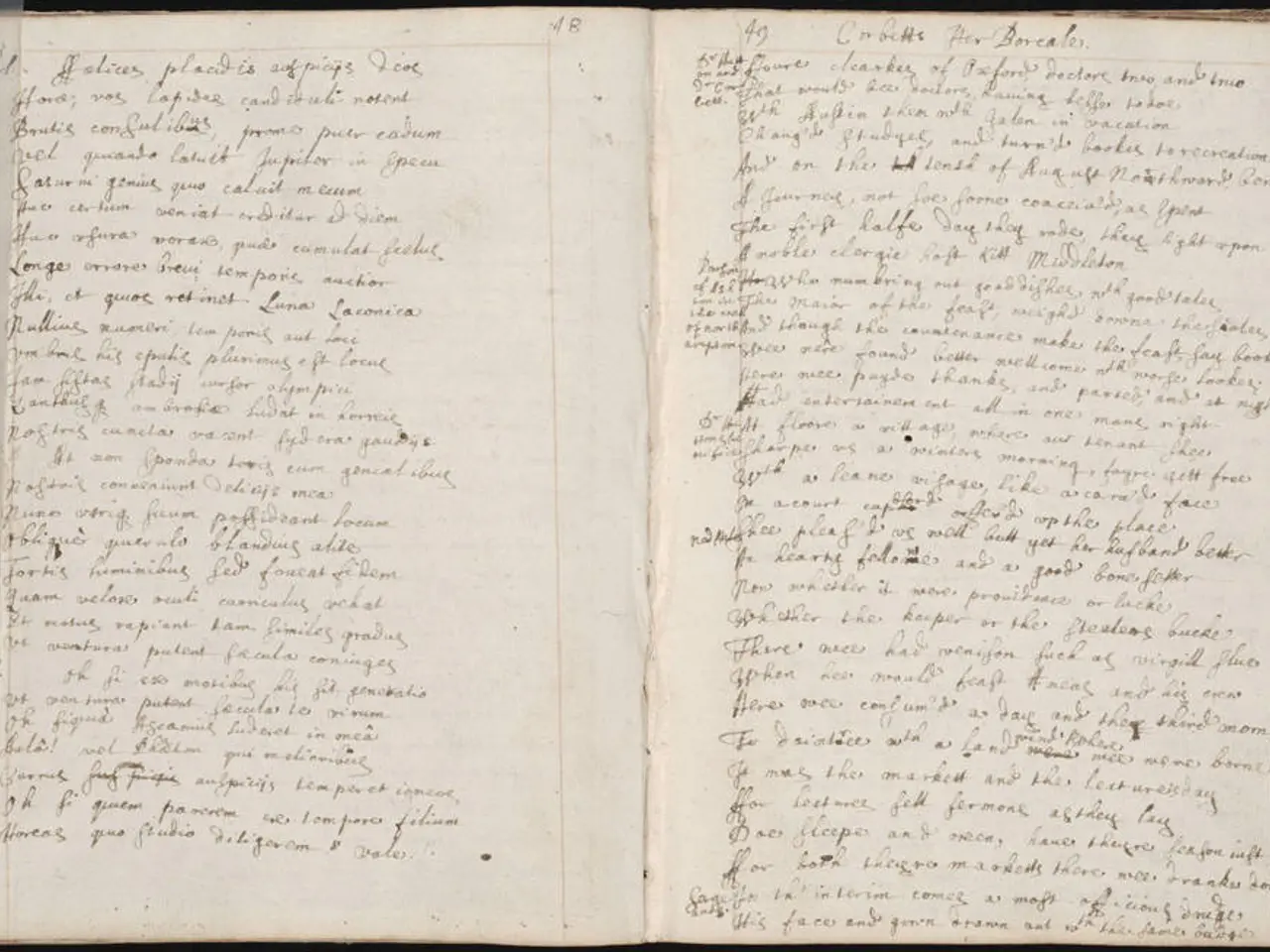Methods for Cultivating Rhubarb
Forcing Rhubarb Indoors: A Traditional Method for Early Crops
Rhubarb, a classic early fruit of the year, can be encouraged to produce tender, sweet stems even earlier by forcing it indoors. This traditional method, reminiscent of the rhubarb growing practices in Yorkshire’s "Rhubarb Triangle", involves creating a dark and warm environment for the plant.
To force rhubarb indoors, you'll need a suitable variety such as 'Timperley Early'. In late winter, usually around December, cover the crown of the established rhubarb plant with an upturned large pot, bucket, or container that blocks out light. Seal the pot around the plant to exclude light, creating a dark environment.
Place the covered rhubarb in a cool but frost-free place indoors or in a heated greenhouse. The lack of light tricks the rhubarb into sending up long, pale, tender stems, which are ready to harvest roughly 6-8 weeks later.
This method mimics traditional rhubarb forcing as done historically, where rhubarb was grown in dark sheds warmed by coal to produce early, sweet stems harvested by candlelight.
When it comes to dividing rhubarb, dig up the existing crown, split it into sections with each section containing 1-3 buds, and replant the smaller crowns in moist, fertile soil. Rhubarb stems should be harvested when they're green or red, with no need to use a knife when harvesting.
It's best to wait until rhubarb plants are well-established before forcing them, as it takes quite a lot of energy from the plant. Allow plenty of space around the plant so it can spread out. Remove any flower stems when they appear to direct energy back into stem production.
Avoid harvesting rhubarb from divided sections in the first year. Rhubarb can be propagated by dividing the crowns, and it's best to wait until the plant is well-established before dividing it.
Rhubarb can be used in a variety of ways, including stewed with sugar, in crumbles, as a porridge topping, cordials, and other drinks. The forced rhubarb plants will not usually produce much of a crop later on, but can be divided and replanted in summer.
Forced rhubarb is usually ready from late winter to early spring, with shorter but sweeter stems. Rhubarb needs an open, sunny or partially shaded site, and rich, moist soil. Rhubarb can be forced indoors in a greenhouse or garage for an even earlier crop.
Remember, only the rhubarb stalks are edible, never eat rhubarb leaves as they are extremely poisonous. Dividing rhubarb crowns gives new life to the plant and increases the stock of young, healthy rhubarb plants. Water during dry periods and mulch annually, in autumn. Plant rhubarb in fertile, free-draining soil with added organic matter, such as well-rotted horse manure.
In summary, forcing rhubarb indoors involves covering the plant's crown to exclude light and maintaining it in a warm, dark environment through winter, stimulating early growth of sweet stems ready for harvest in early spring. This traditional method, with roots in Yorkshire’s "Rhubarb Triangle", has been used for centuries to enjoy rhubarb's sweet, tender stems even before spring officially arrives.
By initiating the forced rhubarb growing method, you're following a tradition with roots in Yorkshire’s "Rhubarb Triangle," which involves growing rhubarb indoors during winter. To accomplish this, choose a variety like 'Timperley Early' and create a dark, warm environment by covering the plant's crown with a large container and keeping it in a cool, frost-free place inside your home or greenhouse. This couldn't be more fitting, as it's a means of transforming your home-and-garden space into a mini home-and-garden-grown rhubarb farm, giving you a taste of the sweet lifestyle of rhubarb cultivation.




